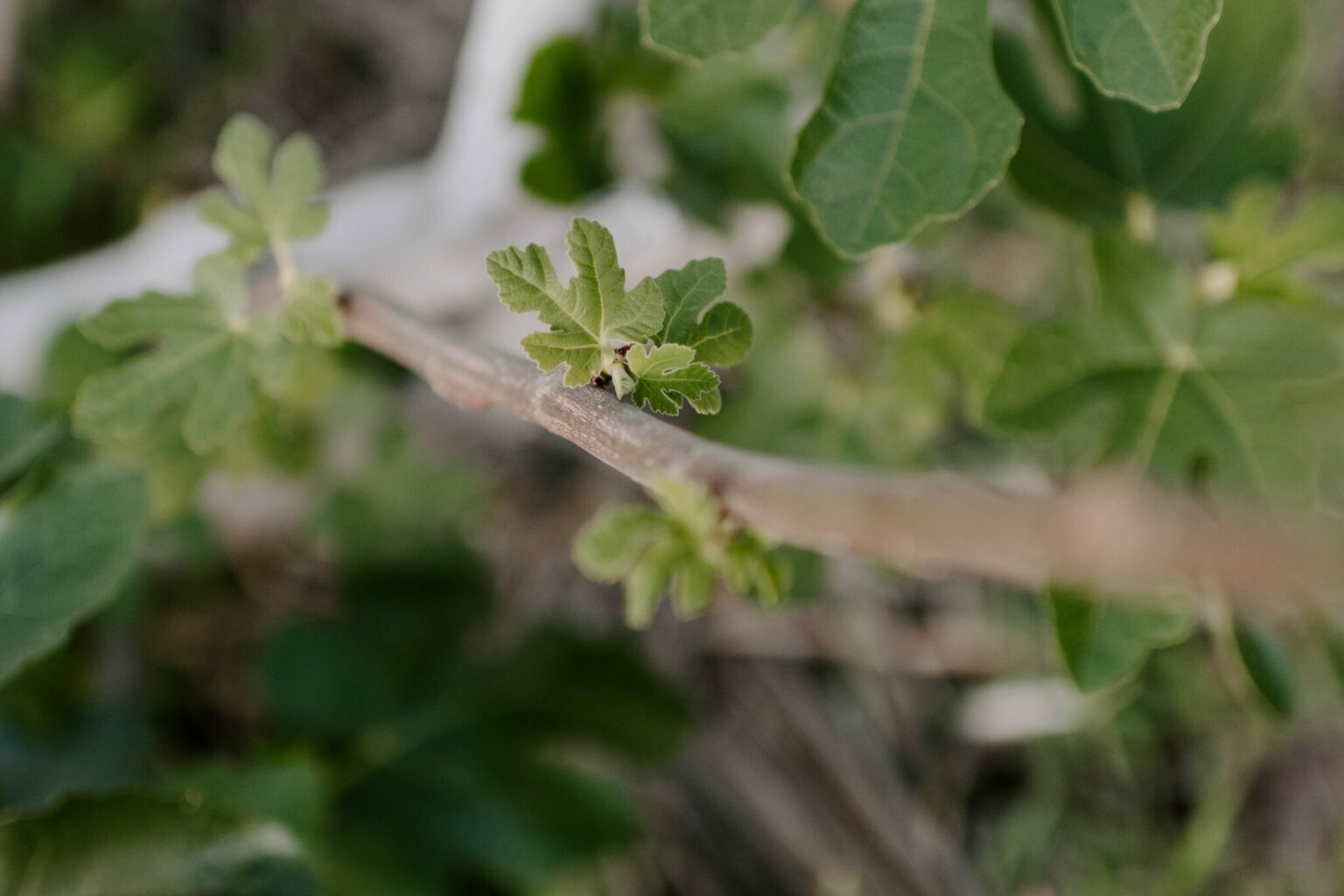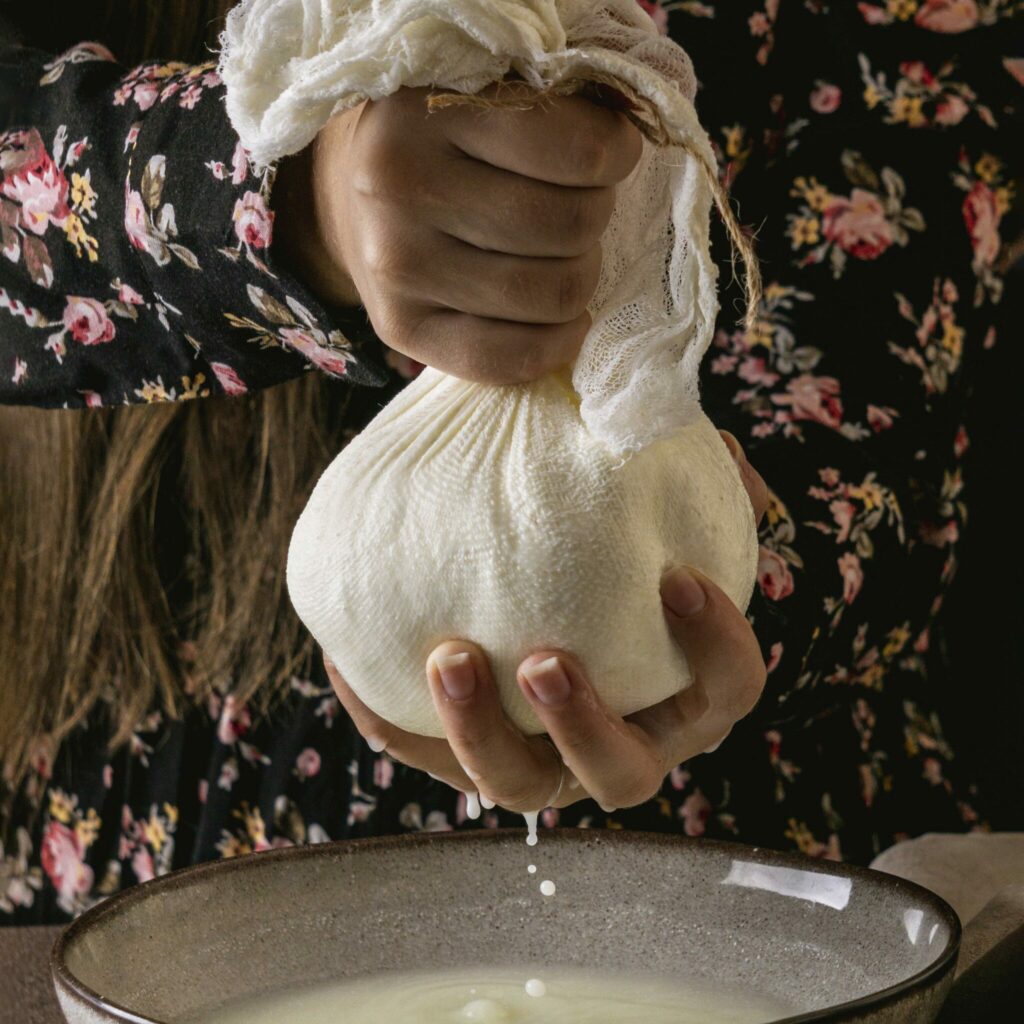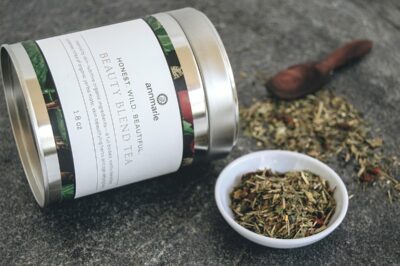Table of Contents[Hide][Show]
Acid reflux, with symptoms like heartburn and stomach pain, is a common digestive issue significantly impacting the quality of life for many. While antacids can offer temporary relief, they don’t always address the root cause and can sometimes complicate matters in the long run. This reality prompts many to seek safer, more natural solutions to support their digestive health.
Among traditional herbs known for their soothing properties, marshmallow root emerges as a noteworthy option with its unique characteristics. So, how does this root work to support those dealing with acid reflux, and what benefits can we expect from it? Let’s delve deeper to find out.
Understanding Acid Reflux (GERD)

Acid reflux, or GERD, occurs when acid from the stomach—which has a very low pH for food digestion—travels backward up into the esophagus. Because the esophageal lining is much more delicate and not designed to withstand a strong acidic environment, even a small amount of refluxed acid is enough to cause an uncomfortable burning sensation (commonly known as heartburn) and pain. If this condition is unmanaged and recurs, it can lead to inflammation and more serious health issues for the esophagus.
Interestingly, a common misconception is that acid reflux always stems from an overproduction of stomach acid. However, an alternative and increasingly noted perspective suggests that the problem can often originate from a deficiency of stomach acid. When there isn’t enough acid to digest food efficiently, it lingers longer, ferments, and produces gas. This gas creates pressure on the lower esophageal sphincter (LES), causing it to malfunction and allowing acid to be easily pushed back up. Therefore, while antacids can offer temporary symptom relief by neutralizing existing acid, their regular use may not address the root cause, especially if it’s low acid, and can even further complicate the body’s natural digestive processes in the long run.
Marshmallow Root and Its Natural Soothing Power
So, to truly harness all these wonderful properties of marshmallow root in
supporting acid reflux, the way we prepare and use it plays an incredibly important role. Let’s explore the optimal method right below.

The Marshmallow Plant – A Long History in Traditional Medicine
The marshmallow plant, often with its pale pink or white flowers, has been revered for thousands of years. Its scientific name, Althaea, derives from the Greek word “altho,” meaning “to heal.” From ancient Egypt, through Greece, Rome, and into Medieval Europe, marshmallow root was a significant folk remedy, noted by renowned healers like Hippocrates, Dioscorides, and Pliny for its ability to soothe inflammations and irritations, especially in the throat, stomach, and intestinal tract. This rich history of application laid the foundation for modern herbal medicine’s interest in marshmallow root.
Mucilage – The Secret to Its Soothing Effect and Superior Protective Mechanism
The key component responsible for marshmallow root’s medicinal properties is its mucilage. This is not a simple substance but a complex mixture of polysaccharides (complex sugars) that have a strong ability to absorb water, swell, and form a thick, viscous, gel-like solution when in contact with liquid. The mucilage content in marshmallow root is impressive, potentially making up 10% to over 30% of the root’s dry weight, depending on harvest time and growing conditions.
Marshmallow root is believed to be beneficial for acid reflux primarily due to its high mucilage content. When mixed with water, this mucilage forms a protective, gel-like coating that soothes the lining of the esophagus and stomach, helping to reduce irritation caused by stomach acid.
When a marshmallow root solution is ingested, this mucilaginous gel quickly forms a thin, slippery, and slightly adhesive film that coats the entire mucosal surface of the upper digestive tract, from the throat, through the esophagus, down to the stomach. This film acts as a multi-functional natural “armor”:
- Physical Protection: It directly shields the sensitive tissues of the esophagus and the lower esophageal sphincter (LES) from the corrosive action of stomach acid during reflux episodes. Even if a small amount of acid does travel upwards, the mucilage layer will absorb and partially neutralize it, minimizing the burning sensation and pain.
- Soothing Irritation: With its soft and slippery nature, mucilage helps to soothe areas of the mucosa that are already inflamed or irritated, reducing friction and providing a comforting sensation.
- Supporting the Healing Process: By creating a protected and less stimulated environment, the mucilage layer provides favorable conditions for the mucosal cells to repair and regenerate themselves. This is a crucial factor for long-term recovery, not just immediate symptom relief.
- Potential Local Anti-inflammatory Activity: Some preliminary studies and traditional herbal medicine experience suggest that other compounds in marshmallow root (besides mucilage) may also contribute to reducing local inflammatory responses, helping the soothing process to be more effective.
Consistent Use for Sustainable Restorative Benefits
While marshmallow root’s mucilage can offer fairly quick symptomatic relief, supporting the actual restorative process for the mucosa requires time and regular use. This protective film is not permanent; it needs to be replenished frequently to maintain its shielding effect, allowing the mucosa to avoid new acid assaults and providing the necessary conditions for self-regeneration. Therefore, instead of expecting an instant miracle, view marshmallow root use as a natural supportive therapy that demands consistency to achieve long-term, sustainable restorative benefits for your digestive system. The time to perceive significant “healing” improvements will vary depending on an individual’s specific condition and constitution.
How to Prepare and Use Marshmallow Root to Maximize Its Benefits
To ensure the most abundant extraction of mucilage from marshmallow root, which helps create the most effective protective film for the mucosa, the cold infusion method is often prioritized and recommended by herbalists.
Why Cold Infuse Marshmallow Root Instead of Making Hot Tea?
Many herbs are often recommended as hot teas to extract active compounds. However, with marshmallow root, our primary goal is to obtain as much mucilage as possible. The high temperature of boiling water can partially denature the complex polysaccharides that make up the mucilage, reducing their ability to swell and form a gel. Conversely, infusing marshmallow root in room temperature or cool water for a sufficient duration allows the mucilage molecules to slowly release and dissolve fully into the water, creating a thick, rich, and medicinally potent solution.
Detailed Recipe for Marshmallow Root “Cold Brew”

This is a basic recipe; you can adjust the quantities to suit your usage needs.
- Preparation Ratio:
- 1 Tablespoon (about 15ml) of dried, cut and sifted, or powdered marshmallow root.
- 1 Cup (about 240ml) of room temperature or cool water (filtered, purified water is best).
- Tools Needed:
- A glass jar or jug with a lid.
- A filtering tool (if using cut root): fine-mesh sieve, clean cheesecloth, or a tea infuser bottle. If using root powder, you might not need to filter, or you can let the powder settle and decant the clear liquid.
Step 1: Place the prepared marshmallow root into the glass jar or jug.
Step 2: Pour the measured water into the jar, ensuring the herb is completely submerged. If using a suspended infuser (like a tea ball or filter bag), make sure the root is fully immersed in water.
Step 3: Seal the jar/jug tightly with the lid.
Step 4: Let it infuse at room temperature. The minimum infusion time is 4 hours. However, for the best results and maximum mucilage extraction, you should infuse for 8 hours or, ideally, overnight.
Step 5: After the infusion period, if you used cut root, strain out the plant material to obtain a smooth, viscous marshmallow root liquid. If you used powder, you can stir it well and consume the powder too (if desired), or wait for the powder to settle and then gently decant the liquid from the top.
Daily Dosage and Usage for Supportive Treatment
The cold-infused marshmallow root solution should be used regularly to maintain the protective coating on the mucous membranes.
- Suggested Dosage: Drink 1 cup (about 240ml) of this solution, 3 times daily.
- 1st dose: Drink first thing in the morning when you wake up, before breakfast.
- 2nd dose: Drink around midday, possibly before or after a meal with some interval.
- 3rd dose: Drink before bedtime.
- Duration of Use: Depending on the severity of your acid reflux, the damage to your esophagus, and your LES (Lower Esophageal Sphincter), you may need to continue this regimen for a period (a few weeks to a few months) to see a marked difference and support the recovery process. Some individuals might experience improvement sooner.
Quick Solutions for Acute Stomach Pain Relief
While cold infusion is optimal, if you need a quick solution to soothe acute stomach pain or immediate discomfort, you can:
- Make a Hot Tea: Steep 1-2 teaspoons of powdered or cut marshmallow root in a cup of hot water for about 10-15 minutes. Although it won’t extract as much mucilage as a cold infusion, it can still provide some comfort.
- Direct Powder Mix: Stir one teaspoon of marshmallow root powder into a cup of warm water and drink immediately. This method is convenient and fast.
Remember, every body responds differently. This is just the first step on your digestive health journey. If possible, consult with a healthcare professional or an herbalist for personalized next steps towards optimal gut health. They might suggest adding other herbs to your cold infusion (e.g., chamomile is an excellent herb to steep cold with marshmallow) or transitioning to other formulas to support digestion without causing pain.
Exploring Other Uses and Important Precautions for Marshmallow Root
Marshmallow root is known not only for its ability to support acid reflux. This herb also has many other traditional applications, alongside important points to note for safe and effective use.
Expanding Knowledge on Other Benefits of Marshmallow Root
Thanks to its rich mucilage content and inherent soothing properties, marshmallow root is also applied in various other situations:
- Comprehensive Digestive System Support: The protective film from mucilage isn’t limited to the esophagus and stomach; it can help soothe irritation along the digestive tract, potentially bringing comfort to those with a sore throat, or helping to alleviate discomfort in more complex intestinal conditions (however, for specific medical conditions, consulting a healthcare professional is essential).
- Alleviating Dry Coughs and Soothing Throats: Marshmallow root’s ability to coat and soften mucous membranes is very useful when the throat is dry, scratchy, or when dealing with persistent dry coughs.
- Traditional Topical Applications: Some traditional remedies also use marshmallow root extract externally to soothe minor burns, insect bites, or irritated skin areas, owing to its emollient properties and ability to support the body’s natural anti-inflammatory response.
Special Considerations When Using Marshmallow Root
To maximize benefits and ensure safety, pay attention to the following:
Interaction with Oral Medications:
This is a primary concern. The mucilage layer created by marshmallow root can slow or hinder the absorption of other medications you might be taking. Therefore, always consume marshmallow root at least 1-2 hours apart from other drugs, or preferably as specifically advised by your doctor, especially if you are undergoing medical treatment.
Potential Effect on Blood Sugar:
Marshmallow root has been noted to potentially cause a mild reduction in blood sugar levels. Thus, individuals undergoing diabetes treatment or those with blood sugar concerns need to monitor their levels carefully and should discuss with their doctor before regularly using marshmallow root.
Other Cases for Caution:
Individuals with conditions of excessive mucus in the body might find marshmallow root’s mucus-enhancing properties unsuitable. For pregnant and breastfeeding women, due to a lack of sufficient modern scientific studies on safety, consulting a doctor is mandatory. When using powdered marshmallow root, don’t forget to drink enough water to avoid any discomfort from the powder swelling.
Clear Distinction from Common Candy:
It’s crucial to remember that the health benefits discussed throughout this article pertain to medicinal marshmallow root (Althaea officinalis), not the marshmallow candies you commonly see. Modern marshmallow candies are primarily made from sugar, corn syrup, and gelatin, and do not contain the mucosa-protecting mucilage found in the root. Furthermore, the high sugar content in candy can be detrimental, even worsening symptoms for some individuals with acid reflux. However, you can create herbal marshmallows using medicinal marshmallow root.
Conclusion
Marshmallow root, with its unique mucilage, truly offers a promising natural solution to soothe and help protect the digestive lining from acid reflux discomfort. To best harness this benefit, remember the cold infusion method and use it consistently, while also being mindful of potential drug interactions.
Most importantly, always recall that medicinal marshmallow root is entirely different from candy. Listening to your body, combined with a healthy lifestyle and seeking professional advice when needed, is key to finding balance and comfort for your digestive system.
Quick Answers to Common Questions
What herb is considered good for supporting acid reflux?
Marshmallow root is a traditional herbal choice many trust due to its ability to create a soothing mucilage coating. Additionally, other herbs like deglycyrrhizinated licorice (DGL), chamomile, or slippery elm bark are also often mentioned for similar benefits. However, what is “best” can depend on an individual’s constitution and specific condition.
Who should be cautious or avoid using marshmallow root?
Individuals on prescription medications should take marshmallow root at least 1-2 hours apart from their drugs, as it can affect absorption. People with diabetes should monitor their blood sugar carefully. Pregnant or breastfeeding women, and those with excessive mucus conditions, should also consult their doctor before use.
Which is better for acid reflux support: marshmallow root or slippery elm?
Both marshmallow root and slippery elm bark contain mucilage and are traditionally used to soothe the digestive tract lining, helping to alleviate acid reflux symptoms. There is no strong scientific evidence definitively stating one is absolutely “better” than the other; the choice may depend on personal preference, availability, and how your body responds. Both are considered gentle herbal options.








What a beautiful write up of this herb. Thank you for this <3
Great article. Thank you for writing this. As a victim of GI medical malpractice I have immensely suffered from PPI drugs that were never needed. Surgeries, many procedures, blood work—all led me to get integrative help and get 75% better. Though I am disabled today due to the nightmare that went on in my GI track, I know what can help or harm me and try to tell people about what vitamins, herbals, amino acids and IV vitamin therapies help with many conditions. Thank you, again. – Meredith Iager
Thank you for the article. I am going to try this for severe heartburn/acid reflux. I already had an upper endoscopy that showed I have a lot of inflammation. Of course they want me to take the PPIs but I don’t want to. I bought the powder without realizing I should have bought the herb itself for the cold infusion. Now that I have a bag of powder to use up am I reading this correctly that I should take 1tsp of powder in 1 cup of water 3x a day, after meals? Does it matter if the water is room temp, cold, heated, etc? Also can this be consumed right away or should I let it sit for a while? Any advice would greatly be appreciated. Thank you!
I have the opposite problem-I think it made my symptoms worse, unfortunately. I have reflux and a probable ulcer right now, so I tried using the powder—twice. Both times it felt like the pain intensified and I was really nauseous after the second try. I found only one website that briefly states that in some people it can cause stomach upset and dizziness. I’ve tried licorice with success, so I’ll have to stick with that and watch my bp. If anyone has more information about possible side effects, I would love to know.
Will the pill form of marshmallow root do same thing for acid reflux?
Hello! I really enjoyed your article. I have a whole bag of this root but every time I take it, my voice disappears. I have LPR and anything sour aggregates my vocal cords. Please, do you know of any tips to make it more alkaline? Thanks
Just one more question; I have also chronic sinusitis. Should I avoid this herb?
Hi, I am so glad to have found this article on Marshmallow Root for treating GERD. I have been on PPI’s on & off for 4 years now. I purchased a bag of raw Marshmallow Root (which looks like wood chips) and it is so soothing for me. It helped me tremendously to come off of the ppi’s. I steep the marshmallow root overnight to drink the following morning. But its very watery and in no way thick. Am I doing something wrong?? I also thought that maybe when its ingested it gets thicker?? Thanks for your help!!
I have a big problem with reflux but also constipation. When I tried Slippery Elm for the reflux it increased constipation problems. Will this also occur with Marshmallow. Can I take extract instead?
I prepare my marshmallow quite differently but I must say it’s very effective. I have GERD and when I get an attack, it gives me a sore throat. Three days of consecutive use: the sore throat was completely gone. I use one capsule and dilute it in a cup of water. Works like a charm.
Is it a teaspoon for the hot prep and a tablespoon for the cold? or was that a typo?
Hey Dana!
The teaspoon of powder in a cup is consuming the plant directly whereas the tablespoon in the cold infusion takes time and removes the constituents that are in the plant. Hope that may clarify 🙂
xo- Michon
ASC Customer Happiness Team
Thanks for the advice Aubrey. I’ve suffered quite badly with a cough since 2004, which I am now realising is mainly caused by acid. I will keep you posted. I recently started taking the herbs, mullein, hyssop, and plantain. Which have been beneficial. Peter.
You’re welcome, Peter! Best of luck 🙂
Hi, I purchased some dried cut marshmallow root, and made tea from it, but it didn’t turn how I expected. It was though I’d put some wood chippings in water for a few hours. Tasted like that too. I thought it would be something of a thicker constiuency. Is it supposed to be the constiuency of ordinary tea. ? Cheers. Peter.
I use the super thin powder, it mixes wonderfully! … And I also add a bit of slippery elm. Its super thick, but has made major changes in my home!
I’ve been on lanszoperzone for 5weeks still getting acid reflux I’ve used the marshmallow and this helped immediate with a good result, but I’ve got a intolerance to fruits citrus giving me cystitis symptoms , this has come on since taking the marshmallow can you advice
I used marshmallow root recently after 2 months of stomach hell – tightening throat, burning, feeling nausea on an almost daily basis after I’d taken a course of antibiotics unwisely on an empty stomach. I infuse it in tea with passion flower and camomile. After a few uses nightly the dry cough I had is all but gone and my symptoms are far less severe or frequent. I bought it in herb form and it was only £2 from my local health shop. It’s so tasty an soothing in tea, too. Thanks for the tips!
Do you think Marshmallow root tablet (dried powder form) is also effective?
I really like your explanation of GERD. It makes sense to me that anything that would reduce stomach acid would only exacerbate the GERD (lower acid= more resident time for food in the stomach=more gas/bloating = leaking of stomach acid into esophagus). I have been suffering from GERD (or gerd like symptoms) for the past few months. I am going to try Marshmallow root. Thanks for the wonderful article.
I really like your explanation of the GERD. It makes sense to me that anything that would reduce stomach acid would only exacerbate the GERD (lower acid= more resident time for food in the stomach=more gas/bloating = leaking of stomach acid into esophagus). I have been suffering from GERD (or gerd like symptoms) for the past few months. I am going to try Marshmallow root. Thanks for the wonderful article.
I have a very disabled daughter with severe feed. She is on anti convulsants. Is marshmallow safe to take?
Hi Skye,
I’m not sure. Most likely it would be fine because marshmallow is very gentle, but I would suggest talking to a holistic practitioner about working with Marshmallow along with the medication your daughter is on.
Best,
Aubrey
Hi. Was wondering where can one purchase marshmallow Root? Can you tell me a website where I can purchase it? Thank you.
Your local herb store should have it or you can order it online from Mountain Rose Herbs!
Can one use the tincture/liquid alcohol free instead of the herb to get relief?
Hi Donna,
The tincture might be okay, but it won’t have quite the same demulcent properties. I would suggest working with the tea or the powder if you can.
Best,
aubrey
I work at a health food store and have customers that don’t like to use bulk herbs even though we sell them. What’s your opinion on marshmallow in the capsule form?
Hi Jason,
I personally don’t recommend the capsules of marshmallow root, especially if you’re using it for the acid reflux, because the stomach acid has to break down those capsules and the marshmallow root is less effective in the upper GI tract. Many people use the capsules for lower GI issues like leaky gut and that’s a bit better because the capsule is typically broken down already but since marshmallow root is healing to all of the internal mucosa, I think it’s always better to use just the herb if possible. Not to mention that when you’re purchasing a pre-made capsule, there’s always a chance that you’re not getting the highest quality herbal ingredients (depending on the company). For people that don’t want the hassle of making the tea, I often recommend working directly with a teaspoon of the powder and adding it to their morning routine in a cup or water or mixed in with their breakfast.
Aubrey
do you think is safe for babies with GERD?
Hi Rebeca,
We’re not qualified to speak on that, but thank you for reading and commenting!
I have realy bad refulx, ave had a funduplaction wrap. Ave got heartburn back again with avengence, ave have found out that my wrap has slipped. Can this be repaired. Thank you.
Hi Judy,
We’re sorry to hear that. Because it sounds like you’re experiencing serious discomfort, we do suggest visiting with your doctor and working with a holistic practitioner.
Have things improved? I believe you can have your surgery redone.